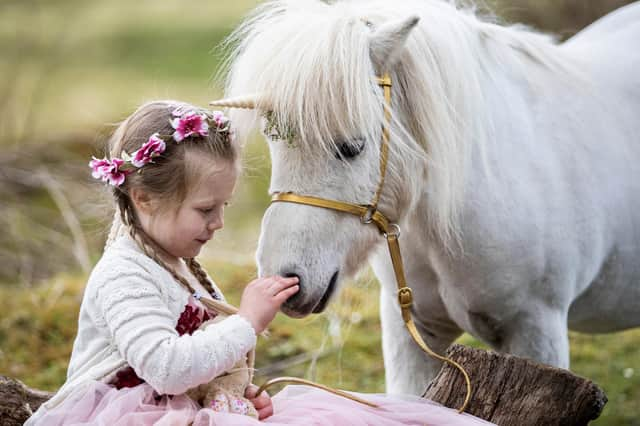National Unicorn Day: Why is the unicorn Scotland's national animal? Why is it pictured in chains?


Today, the mythical beast may be associated with fairytale stories and children’s sparkly toys, but evidence of the unicorn’s connection to Scotland dates back as far as the 1300s.
Also, we’re not alone in revering the mythical animal kingdom – Wales celebrates the dragon, the Czech Republic praises a two-tailed lion and over in Bhutan the nation honours the great thunder dragon.
Unicorn and the lion
Advertisement
Hide AdAdvertisement
Hide AdAmerican historian Elyse Waters became interested in Scotland’s national animal when she discovered a Scottish medieval cookbook that included a recipe for how best to cook unicorn – people clearly believed it existed so much that you could eat it.
Her research then led her to discover the unicorn was believed to be the natural enemy of the lion - a symbol that the English royals adopted around a hundred years before.
According to folklore, the lion and the unicorn hate each other - a tradition going back to the ancient Babylonians in 3,500 B.C – which has been one reason behind its role as Scotland’s national animal.
An English nursery rhyme of the period sums up the animosity:
"The lion and the unicorn were fighting for the crown,
the lion beat the unicorn all around the town.
Some gave them white bread, and some gave them brown,
some gave them plum cake and drummed them out of town.”
Celtic mythology
In Celtic mythology, the Unicorn of Scotland symbolised innocence and purity, healing abilities and power.
In the water cleansing folklore tale, a snake slithers up to a watering hole and poisons it, but then the unicorn dips its horn into the water to purify it again for the other animals.
The unicorn in this folklore became a symbol of protection for other creatures and, during medieval times, this chivalrous act made the unicorn the ultimate animal.
Sailors would return home with narwhal tusks telling stories of the mythical creature to their families. Scots would then built upon its image as a heroic, pure, chivalrous creature and use it as a symbol for their nation.
Advertisement
Hide AdAdvertisement
Hide AdIt was after Scotland’s victory over the army of King Edward II at the Battle of Bannockburn in 1314 when the nation then adopted the unicorn as a symbol of her strength.
When King James VI of Scotland succeeded Elizabeth I of England the Scottish coat of arms featured two unicorn shieldbearers, but to soften the stark symbolism, King James replaced the left unicorn with the English lion after the union of the two nations.
Today, the Royal Coat of Arms representing the United Kingdom and Northern Ireland features the English Lion on the left and a chained unicorn on the right, while the Scottish Royal emblem has the two beasts reversed.
Why is it chained?
Legend says the unicorn was believed to be the strongest of all animals and could only be humbled by a virgin maiden. It is possible, according to some interpretations, that the chains across it symbolise the power of the Scottish kings – they were strong enough to tame even a unicorn.
And now a thought to share on National Unicorn Day: A wise man never plays leapfrog with a unicorn – Tibetan proverb.
A message from the Editor:
Thank you for reading this article. We're more reliant on your support than ever as the shift in consumer habits brought about by Coronavirus impacts our advertisers.
If you haven't already, please consider supporting our trusted, fact-checked journalism by taking out a digital subscription.
Comments
Want to join the conversation? Please or to comment on this article.